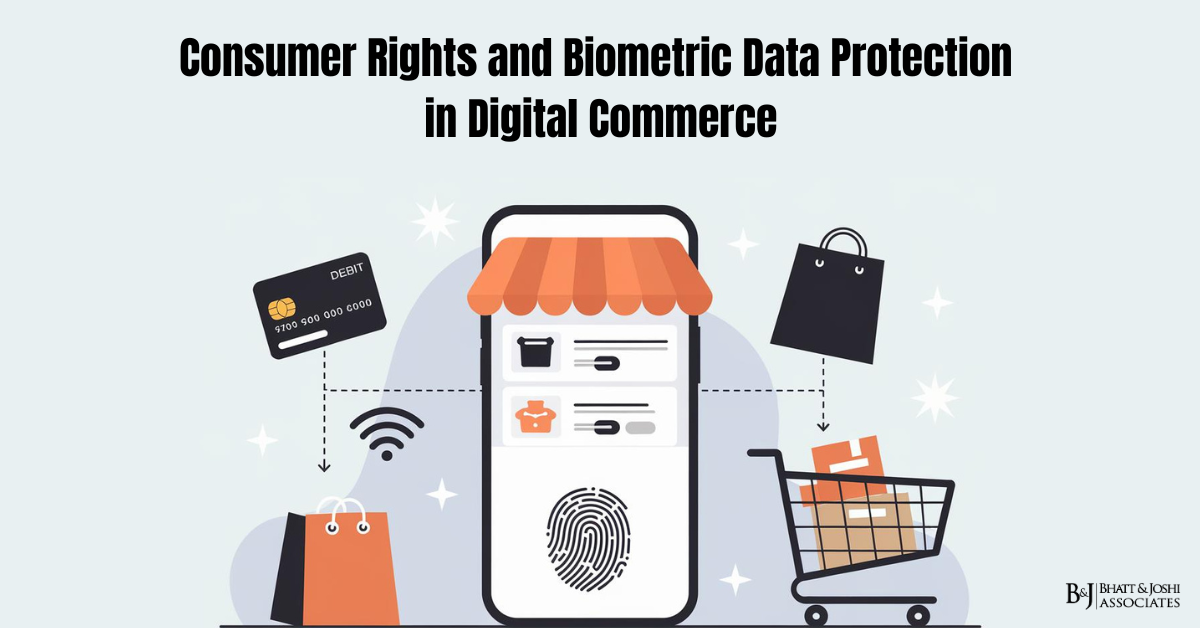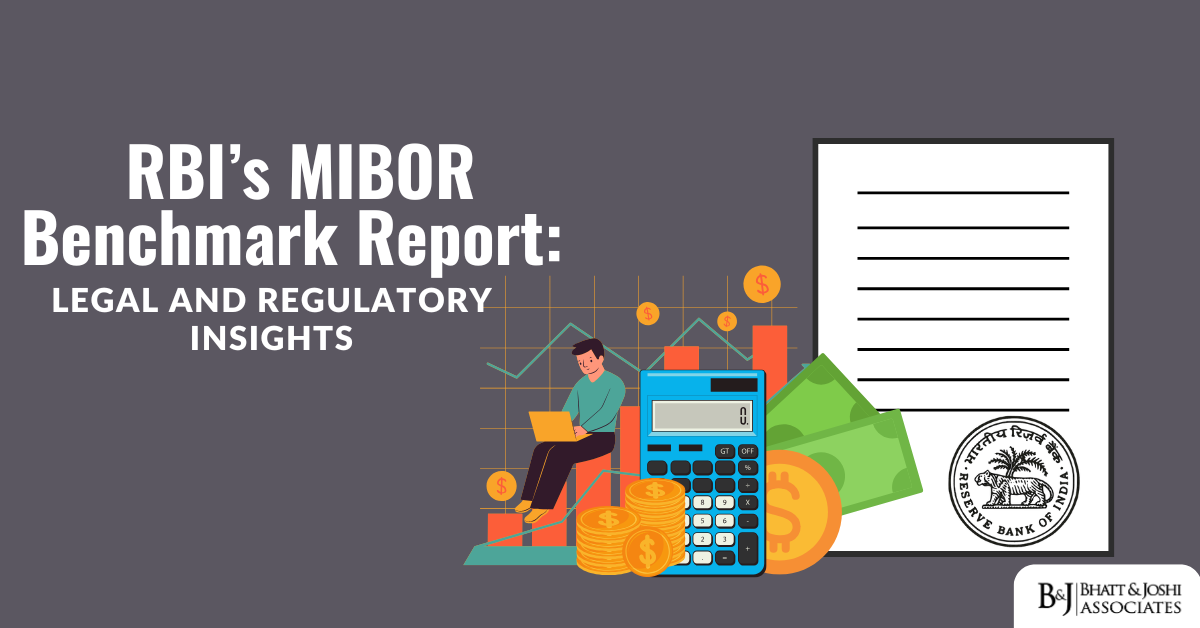Introduction
In an increasingly digitized world, biometric data has emerged as a critical component in enhancing security, streamlining processes, and providing personalized experiences in digital commerce. From facial recognition to fingerprint scanning, biometric technologies are being integrated into various facets of e-commerce, online banking, and digital services, offering consumers the convenience of quick and secure transactions. However, as the use of biometric data becomes more widespread, concerns about privacy, data protection, and the potential misuse of sensitive personal information have also grown. Consumers now face new challenges in safeguarding their biometric data, and there is a pressing need for robust legal frameworks that protect their rights in this digital landscape. The protection of biometric data in digital commerce is not just a matter of technological security but also of legal and ethical importance. Biometric data is inherently tied to an individual’s identity and is considered more sensitive than other forms of personal data due to its uniqueness and permanence. Unlike passwords or credit card numbers, biometric data cannot be easily changed if compromised, making it a prime target for identity theft, fraud, and unauthorized surveillance. Consequently, ensuring the security and privacy of biometric data is crucial for maintaining consumer trust and confidence in digital commerce. This article explores the legal frameworks and consumer rights related to biometric data protection in digital commerce. It examines the current regulatory landscape, the challenges posed by the use of biometric data, and the rights consumers have to protect their biometric information. Additionally, it discusses the responsibilities of businesses in handling biometric data and the potential consequences of non-compliance with data protection laws.
The Role of Biometric Data in Digital Commerce
f refers to unique physical or behavioral characteristics that can be used to identify an individual. Common examples include fingerprints, facial recognition, iris scans, and voiceprints. In digital commerce, biometric data is used for a variety of purposes, including identity verification, access control, fraud prevention, and personalized customer experiences.
One of the most prominent uses of biometric data in digital commerce is for authentication purposes. Traditional authentication methods, such as passwords or PINs, are increasingly being supplemented or replaced by biometric authentication due to its convenience and enhanced security. For example, many online banking services now allow customers to log in using fingerprint or facial recognition technology, which reduces the risk of unauthorized access by making it more difficult for fraudsters to replicate or steal biometric data compared to traditional credentials.
Another significant application of biometric data in digital commerce is in personalized marketing and customer service. Companies use biometric data to create more tailored experiences for consumers, such as personalized recommendations based on facial recognition or voice analysis. This data-driven approach allows businesses to better understand their customers and provide more relevant and targeted services, thereby enhancing customer satisfaction and loyalty.
However, while the use of biometric data offers numerous benefits, it also raises important questions about privacy and data protection. The collection, storage, and processing of biometric data involve handling sensitive information that, if misused or inadequately protected, can lead to severe consequences for consumers. Therefore, it is essential that businesses operating in the digital commerce space adhere to strict legal standards to ensure the security and privacy of biometric data.
Regulatory Frameworks Governing Biometric Data Protection in Digital Commerce
The protection of biometric data in digital commerce is governed by a complex array of regulatory frameworks, which vary by jurisdiction. These frameworks establish the legal obligations for businesses that collect and process biometric data and outline the rights consumers have to protect their personal information.
Data Protection Laws
Data protection laws are the primary legal instruments that regulate the collection, use, and storage of biometric data. These laws typically classify biometric data as sensitive or special category data, subjecting it to higher levels of protection than other types of personal information.
In the European Union, the General Data Protection Regulation (GDPR) is the cornerstone of data protection law. The GDPR categorizes biometric data as a special category of personal data, which means that its processing is generally prohibited unless specific conditions are met, such as obtaining explicit consent from the data subject, fulfilling a legal obligation, or protecting vital interests. The GDPR imposes stringent requirements on businesses that process biometric data, including the obligation to implement appropriate technical and organizational measures to ensure the security of the data.
The GDPR also grants consumers several rights concerning their biometric data, including the right to access their data, the right to request the rectification or deletion of inaccurate data, and the right to object to or restrict the processing of their data. Importantly, the GDPR gives consumers the right not to be subject to decisions based solely on automated processing, including profiling, which can have significant implications for businesses using biometric data in AI-driven systems.
In the United States, data protection laws are less uniform, with a combination of federal and state laws governing the use of biometric data. At the federal level, there is no comprehensive data protection law equivalent to the GDPR, but certain sector-specific regulations, such as the Health Insurance Portability and Accountability Act (HIPAA), provide protections for biometric data in healthcare contexts. Additionally, the Federal Trade Commission (FTC) enforces consumer protection laws that prohibit unfair or deceptive practices related to the handling of biometric data.
Several U.S. states have enacted their own biometric privacy laws, with Illinois’ Biometric Information Privacy Act (BIPA) being the most notable. BIPA imposes strict requirements on businesses that collect biometric data, including obtaining informed consent, providing clear notice of data collection practices, and establishing guidelines for data retention and destruction. BIPA also provides consumers with a private right of action, allowing them to sue for damages if their biometric data is mishandled or compromised.
Consumer Protection Laws for Biometric Data in Digital Commerce
Consumer protection laws also play a crucial role in safeguarding biometric data in digital commerce. These laws are designed to protect consumers from unfair, deceptive, or abusive practices by businesses and to ensure that consumers have access to accurate information about how their biometric data is collected and used.
In the European Union, the GDPR is complemented by the Directive on Consumer Rights, which ensures that consumers are provided with clear and transparent information about the terms of service and the processing of their data. This includes the obligation for businesses to provide consumers with information about the collection and use of biometric data in a way that is easy to understand and accessible.
In the United States, the Federal Trade Commission (FTC) plays a key role in enforcing consumer protection laws related to biometric data. The FTC has the authority to take action against companies that engage in unfair or deceptive practices related to the collection, use, and security of biometric data. For example, the FTC has brought enforcement actions against companies that failed to adequately secure biometric data, resulting in data breaches that exposed consumers to identity theft and fraud.
International Standards and Guidelines for protection of biometric data in digital commerce
In addition to national and regional regulations, there are several international standards and guidelines that provide best practices for the protection of biometric data in digital commerce. These standards are developed by organizations such as the International Organization for Standardization (ISO), the International Electrotechnical Commission (IEC), and the National Institute of Standards and Technology (NIST).
ISO/IEC 27001, for example, is an internationally recognized standard for information security management that provides a framework for protecting biometric data. It outlines best practices for implementing security controls, managing risks, and ensuring the confidentiality, integrity, and availability of biometric data.
NIST has also published guidelines on the use of biometric data, including recommendations for secure authentication and identity verification processes. These guidelines emphasize the importance of multi-factor authentication, secure storage of biometric templates, and the protection of biometric data during transmission.
While these international standards are not legally binding, they are widely recognized as industry best practices and are often incorporated into national regulations and industry codes of conduct. Adherence to these standards can help businesses demonstrate compliance with legal obligations and reduce the risk of liability in the event of a data breach.
Challenges in Biometric Data Protection in Digital Commerce
Despite the existence of robust regulatory frameworks, protecting biometric data in digital commerce presents several challenges. These challenges stem from the unique nature of biometric data, the rapid pace of technological advancement, and the increasing complexity of digital commerce ecosystems.
Privacy and Security Risks in protecting Biometric Data in Digital Commerce
One of the most significant challenges in protecting biometric data is the risk of privacy violations and data breaches. Biometric data is highly sensitive, and its collection and processing involve handling personal information that is inherently linked to an individual’s identity. The unauthorized access, use, or disclosure of biometric data can have severe consequences, including identity theft, fraud, and unauthorized surveillance.
The integration of biometric data into digital commerce systems often involves the transmission of data across multiple platforms and devices, increasing the risk of data breaches. Additionally, the storage of biometric data in centralized databases creates a single point of failure that can be exploited by cybercriminals. Given the irreversible nature of biometric data, once it is compromised, the individual is permanently at risk.
To mitigate these risks, businesses must implement robust security measures to protect biometric data. This includes encrypting biometric data during transmission and storage, using secure authentication protocols, and conducting regular security audits. Additionally, businesses should adopt a privacy-by-design approach, which involves incorporating data protection principles into the design and development of digital commerce systems.
Informed Consent and Transparency
Another challenge in protecting biometric data is ensuring that consumers are adequately informed about how their data is collected, used, and protected. Informed consent is a fundamental principle of data protection law, requiring that consumers be provided with clear and transparent information about the processing of their biometric data.
However, obtaining meaningful consent in the context of digital commerce can be challenging, particularly when consumers are presented with lengthy and complex privacy policies. Many consumers may not fully understand the implications of sharing their biometric data or may feel pressured to consent to data collection as a condition of accessing a service.
To address these challenges, businesses should strive to provide consumers with clear and concise information about the collection and use of biometric data. This includes explaining the purpose of data collection, the types of data being collected, how the data will be used, and the security measures in place to protect the data. Businesses should also provide consumers with easy-to-understand privacy notices and obtain explicit consent before collecting biometric data.
Discrimination and Bias
The use of biometric data in digital commerce also raises concerns about discrimination and bias. Biometric technologies, such as facial recognition and voice analysis, have been shown to exhibit biases based on race, gender, and other characteristics. These biases can lead to discriminatory outcomes in digital commerce, particularly in contexts such as access to services, pricing, and customer support.
For example, facial recognition systems may have higher error rates when identifying individuals with darker skin tones, leading to unequal treatment of certain groups of consumers. Similarly, voice analysis technologies may exhibit biases that affect the accuracy and fairness of customer service interactions.
To mitigate the risk of discrimination and bias, businesses must ensure that biometric technologies are designed and tested to be fair and inclusive. This includes conducting bias assessments, using diverse training datasets, and implementing safeguards to prevent discriminatory outcomes. Additionally, businesses should provide consumers with the ability to challenge or appeal decisions that are based on biometric data.
Consumer Rights in Biometric Data Protection
Consumers have several rights under data protection and consumer protection laws that are designed to safeguard their biometric data in digital commerce. These rights empower consumers to control how their biometric data is collected, used, and protected.
Right to Information and Transparency
Consumers have the right to be informed about how their biometric data is being collected, used, and protected. This includes the right to receive clear and transparent information about the purpose of data collection, the types of data being collected, the entities involved in processing the data, and the security measures in place to protect the data.
Under the GDPR, businesses are required to provide consumers with information about the processing of their biometric data in a way that is concise, transparent, and easily accessible. This information must be provided at the time of data collection and must be updated if there are any significant changes to the processing activities.
Right to Access and Rectification
Consumers have the right to access their biometric data and to request the rectification of any inaccurate or incomplete data. This right allows consumers to verify the accuracy of their data and to correct any errors that may have occurred during the data collection or processing.
Under the GDPR, businesses must respond to requests for access or rectification within one month of receiving the request. If a business refuses to comply with the request, it must provide the consumer with an explanation and inform them of their right to challenge the decision.
Right to Erasure (Right to be Forgotten)
Consumers have the right to request the erasure of their biometric data in certain circumstances, such as when the data is no longer necessary for the purposes for which it was collected or when the consumer withdraws their consent. This right, also known as the “right to be forgotten,” allows consumers to have their biometric data deleted from digital commerce systems.
Under the GDPR, businesses must comply with requests for erasure unless there are compelling legal grounds to retain the data, such as compliance with legal obligations or the establishment, exercise, or defense of legal claims.
Right to Object and Restrict Processing
Consumers have the right to object to the processing of their biometric data in certain situations, such as when the data is being processed for direct marketing purposes or when the processing is based on legitimate interests. Consumers also have the right to request the restriction of processing if they contest the accuracy of the data or if they believe that the processing is unlawful.
Under the GDPR, businesses must stop processing biometric data in response to an objection or request for restriction, unless they can demonstrate compelling legitimate grounds for the processing that override the consumer’s rights.
Right to Data Portability
Consumers have the right to receive a copy of their biometric data in a structured, commonly used, and machine-readable format, and to transfer that data to another service provider. This right to data portability allows consumers to move their data between different digital commerce platforms without losing control over their biometric information.
Under the GDPR, businesses must provide consumers with their biometric data in a format that allows for easy transfer to another service provider. This right is particularly relevant in the context of digital commerce, where consumers may want to switch between different platforms or services without losing their biometric data.
Business Responsibilities in Handling Biometric Data
Businesses that collect, store, and process biometric data in digital commerce have several responsibilities to ensure the protection of this sensitive information. These responsibilities are established by data protection laws and are critical to maintaining consumer trust and compliance with legal obligations.
Data Security and Risk Management
Businesses are responsible for implementing appropriate technical and organizational measures to ensure the security of biometric data. This includes encrypting biometric data during transmission and storage, using secure authentication protocols, and conducting regular security audits to identify and address vulnerabilities.
Data protection laws such as the GDPR require businesses to conduct data protection impact assessments (DPIAs) when processing biometric data, particularly if the processing is likely to result in a high risk to individuals’ rights and freedoms. DPIAs help businesses identify potential risks and implement measures to mitigate those risks.
Obtaining Informed Consent
Businesses must obtain informed consent from consumers before collecting and processing their biometric data. Informed consent requires that consumers are provided with clear and transparent information about the purpose of data collection, the types of data being collected, and how the data will be used. Consent must be freely given, specific, informed, and unambiguous.
Under the GDPR, businesses must be able to demonstrate that they have obtained valid consent from consumers and must provide consumers with the option to withdraw their consent at any time.
Data Retention and Deletion
Businesses must establish clear guidelines for the retention and deletion of biometric data. Biometric data should only be retained for as long as necessary to fulfill the purposes for which it was collected, and it should be securely deleted once it is no longer needed.
Data protection laws such as the GDPR and BIPA impose specific requirements for data retention and deletion. Businesses must ensure that they comply with these requirements and that they have procedures in place to securely delete biometric data when it is no longer required.
Transparency and Communication
Businesses must be transparent about their data processing activities and communicate with consumers in a clear and accessible manner. This includes providing consumers with information about their rights, how to exercise those rights, and what measures are in place to protect their biometric data.
Under the GDPR, businesses must provide consumers with privacy notices that explain how their biometric data will be processed and how they can exercise their rights. These notices must be written in plain language and be easily accessible to consumers.
Consequences of Non-Compliance
The consequences of non-compliance with biometric data protection laws can be severe, both in terms of financial penalties and reputational damage. Regulatory authorities are increasingly taking a proactive approach to enforcing data protection laws and are imposing significant fines on businesses that fail to comply with their obligations.
Under the GDPR, businesses that violate data protection requirements, including those related to biometric data, can face fines of up to 4% of their annual global turnover or €20 million, whichever is higher. These fines reflect the seriousness of data protection breaches and serve as a deterrent to non-compliance.
In addition to fines, businesses may also face legal liability for damages resulting from a data breach. Consumers have the right to seek compensation for material and non-material damages resulting from a breach of their biometric data, including financial losses, emotional distress, and loss of reputation.
Beyond financial penalties and legal liability, businesses that suffer a biometric data breach may also face significant reputational damage. Trust is a critical component of consumer relationships, and a data breach can severely undermine public confidence in a business’s ability to protect sensitive information. This loss of trust can result in lost customers, decreased revenue, and long-term damage to the business’s brand and reputation.
Conclusion
As biometric data becomes increasingly integrated into digital commerce, the need for robust legal protections and safeguards has never been more critical. Biometric data is inherently sensitive and irreplaceable, making its protection essential for maintaining consumer trust and ensuring the security of digital transactions. The regulatory frameworks governing biometric data protection, including data protection laws, consumer protection laws, and international standards, provide important safeguards for consumers and impose significant responsibilities on businesses.
Consumers have several rights under data protection laws, including the right to information, access, rectification, erasure, and data portability. These rights empower consumers to control how their biometric data is collected, used, and protected in digital commerce. Businesses, in turn, have a duty to implement robust security measures, obtain informed consent, and ensure transparency in their data processing activities.
The consequences of non-compliance with biometric data protection laws can be severe, with significant financial penalties, legal liability, and reputational damage. As digital commerce continues to evolve, businesses must stay informed about emerging legal trends and ensure that they comply with their obligations to protect biometric data.
In conclusion, the protection of biometric data in digital commerce is a complex and multifaceted issue that requires careful attention to legal, technological, and ethical considerations. By understanding and addressing these challenges, businesses can protect consumer rights, ensure compliance with legal obligations, and build trust in the digital marketplace.














